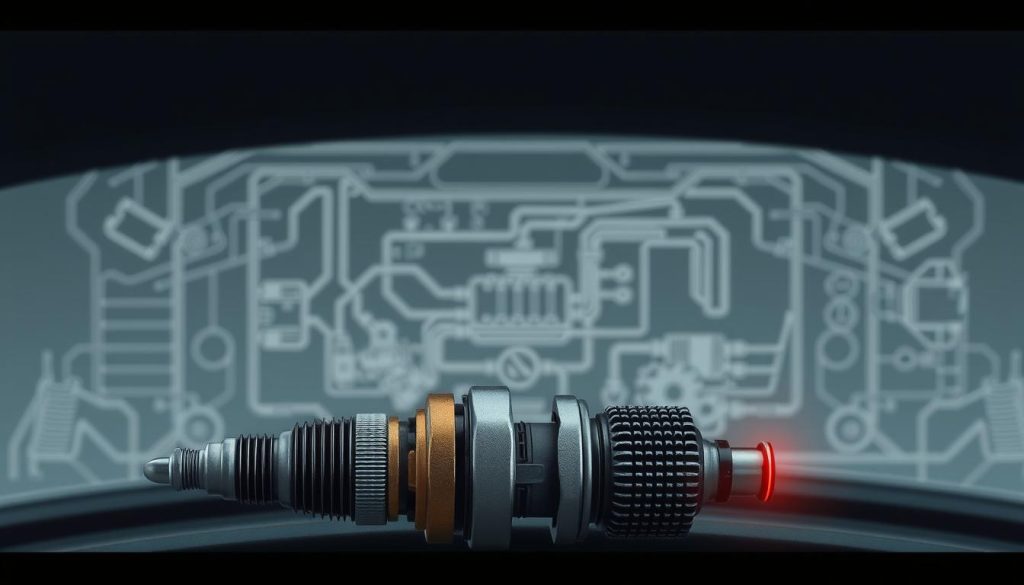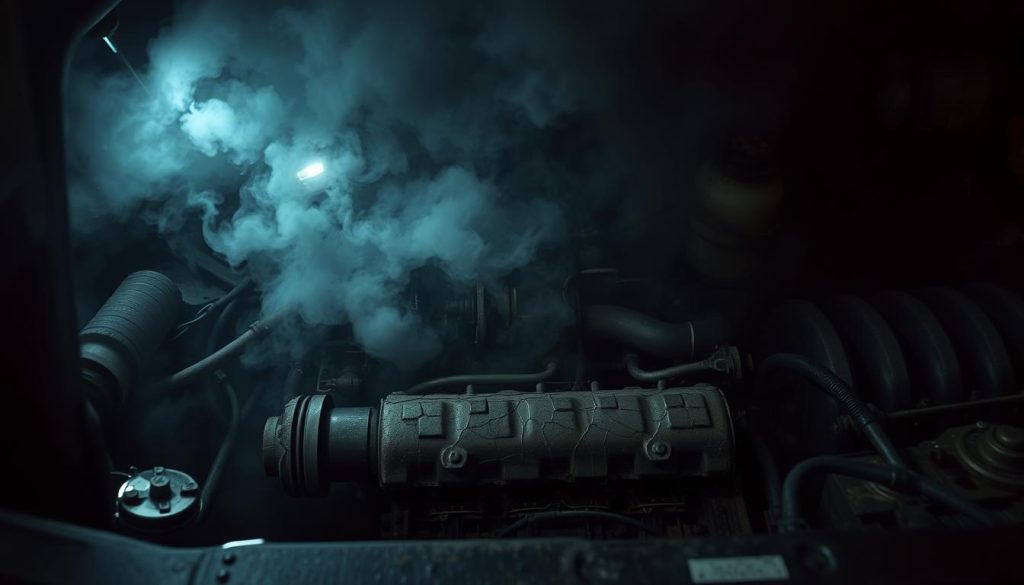That glowing symbol on your dashboard isn’t just a random alert—it’s your car’s way of asking for help. Modern vehicles use advanced systems to monitor performance, and when something isn’t right, they send signals through this warning indicator. Whether it’s a minor sensor glitch or a more serious mechanical concern, ignoring it could lead to bigger problems down the road.
At our San Antonio shop, we’ve seen how confusing these alerts can feel. Drivers often tell us they worry about costly repairs or sudden breakdowns. That’s why our team focuses on clear communication from the moment you walk in. We don’t just scan error codes—we explain what they mean for your specific situation.
Every flashing or steady light tells a story. Our technicians use factory-grade tools to read your vehicle’s digital language, pinpointing issues with precision. From oxygen sensors to emission controls, we trace problems to their source. This approach helps prevent repeat visits and keeps your drives safer.
Key Takeaways
- Dashboard warnings act as early alerts for potential system malfunctions
- Professional diagnosis ensures accurate identification of underlying issues
- Timely attention to alerts can prevent expensive repairs later
- Local expertise matters for region-specific driving conditions and solutions
- Transparent service builds trust and long-term vehicle health
We believe drivers deserve to understand their car’s needs without industry jargon. Our process includes showing you diagnostic results and discussing repair options upfront. Whether it’s a quick fix or a detailed service, we prioritize your safety and budget—because keeping you informed is just as important as keeping your engine running smoothly.
Understanding the Check Engine Light
Your car’s dashboard has a special messenger that speaks through symbols. When that orange icon glows, it means your vehicle’s onboard computer has spotted something unusual. This smart system works like a doctor constantly checking vital signs—tracking everything from fuel mix to exhaust output.
What Does That Glowing Symbol Mean?
Modern cars use over 50 sensors to monitor performance. If one detects a problem—like a misfiring spark plug or faulty oxygen sensor—it sends data to the main computer. This triggers a stored trouble code and lights up your dashboard. The symbol might look like a tiny engine or show text like “Service Required.”
How Cars Self-Diagnose Problems
Your vehicle’s diagnostic system compares sensor readings to factory-set ranges. Small issues might cause a steady light, while urgent problems make it flash. For example, a loose gas cap could trigger a code, but a catalytic converter failure needs immediate care. Our team uses advanced scanners to read these codes accurately.
We’ve helped countless drivers decode their car’s hidden messages. By explaining what each signal means in plain language, we turn confusion into confidence. Whether it’s a minor glitch or major concern, understanding your vehicle’s alerts helps you make smarter decisions about maintenance and repairs.
Common Causes Behind the Warning Light
Your vehicle’s dashboard indicator acts as a translator for complex system messages. While some alerts signal quick fixes, others reveal deeper mechanical conversations needing expert interpretation. We’ve decoded thousands of these warnings through precise diagnostics and hands-on experience.

Loose Gas Cap and Minor Triggers
One of the most frequent issues we resolve starts at your fuel tank. A loose or cracked gas cap allows vapors to escape, disrupting emission controls. Many drivers breathe relief when we tighten this $15 part instead of recommending costly repairs.
Other simple triggers include temporary sensor glitches from weather changes or brief electrical hiccups. Our team always verifies these possibilities first through visual inspections and code resets.
Sensor Malfunctions and Electrical Issues
Modern engines rely on precision measurements from components like oxygen sensors. When these fail, your vehicle might burn 40% more fuel while pumping excess emissions. We replace worn sensors using OEM-grade parts that restore factory performance.
Spark plug degradation creeps up gradually, causing rough starts and power loss. Catalytic converter problems often follow ignored sensor issues, potentially leading to repair bills over $2,000. Our phased approach catches these connections early.
From frayed wiring to computer communication errors, electrical gremlins require advanced troubleshooting. Our technicians use manufacturer-specific software to trace faults most scanners miss. Whether it’s a five-minute adjustment or multi-hour diagnostic, we prioritize clear explanations and lasting solutions.
Check Engine Light San Antonio: Our Diagnostic Process
When your dashboard signals trouble, our team springs into action with precision diagnostics. We combine cutting-edge technology with human expertise to decode your vehicle’s hidden messages.
State-of-the-Art OBD-II Scanning
Our shop uses professional-grade scanners that tap into your car’s computer system like digital interpreters. These devices read hundreds of live data points beyond basic trouble codes. We track oxygen sensor rhythms, fuel trim percentages, and emission patterns in real time.
Modern vehicles often store multiple codes that interact unexpectedly. Our tools cross-reference manufacturer databases to filter false alarms. This precision helps us spot patterns others might miss.
How Our Skilled Technicians Interpret Codes
Reading codes is step one—understanding their context is where we excel. Our technicians analyze freeze frame data showing exact conditions when warnings triggered. Was your engine cold? Did it happen during acceleration? These clues shape our diagnosis.
We compare findings to your maintenance history and local driving conditions. A code indicating catalytic converter issues might stem from Texas heat affecting sensors. Our team explains these connections clearly before suggesting repairs.
Every report includes color-coded severity ratings and repair timelines. You’ll know exactly which problems need immediate attention and which can wait. This transparent approach builds trust while keeping your vehicle running safely.
Potential Consequences of Ignoring the Engine Light
That glowing dashboard symbol acts like a fire alarm for your vehicle’s health. What starts as a minor alert can snowball into major mechanical headaches when overlooked. We’ve helped countless drivers avoid unnecessary stress by addressing these warnings early.

When Driving Becomes Risky Business
Persistent dashboard alerts often signal declining performance. Your car might struggle during acceleration or lose power on hills. These changes create unpredictable driving conditions that put you and others at risk.
Faulty components like oxygen sensors or spark plugs can trigger chain reactions. A misfiring cylinder might damage the catalytic converter within weeks. Our technicians frequently find multiple compromised parts when drivers delay inspections.
The Price Tag of Procrastination
Postponing diagnostics often transforms $200 fixes into $2,000 overhauls. For example, ignoring a faulty fuel injector can lead to complete engine failure. We’ve seen repair bills triple when simple sensor replacements become full system repairs.
Three key areas suffer most from delayed care:
- Fuel efficiency drops up to 40% with unresolved emission issues
- Exhaust gases become more toxic, harming local air quality
- Critical components wear out faster, requiring premature replacements
Our team prevents these domino effects through timely diagnostics. We show customers how today’s small investment protects tomorrow’s budget. With proper care, your ride stays safer, cleaner, and more reliable for every Texas road trip.
Tips for Maintaining and Troubleshooting Your Vehicle
Smart vehicle care blends regular maintenance with knowing when to call experts. Many drivers can address simple fixes themselves while saving complex diagnostics for professionals. Let’s explore practical strategies to keep your ride healthy and recognize when our shop’s expertise becomes essential.
Simple At-Home Checks You Can Perform
Start with the gas cap—tighten it firmly if loose, or replace cracked ones. About 15% of alerts resolve this way. Monitor your car’s behavior for three drive cycles after resetting the warning. Listen for odd noises and track fuel efficiency changes.
Basic maintenance prevents many issues. Replace spark plugs every 30,000 miles and air filters annually. Keep tires properly inflated to reduce strain on sensors. These steps help avoid unnecessary trips to repair facilities.
When to Seek Professional Help
A steady indicator usually permits short drives to our shop, but delays risk bigger problems. Flashing signals demand immediate attention—pull over and call us. Modern vehicles need specialized tools to interpret oxygen sensor data or computer codes accurately.
We solve 85% of diagnostic cases within two hours using manufacturer-grade scanners. Trust your instincts—if vibrations or power loss accompany the alert, visit us promptly. Our team explains findings clearly and prioritizes cost-effective solutions for lasting results.
Our Commitment to Outstanding Service at Heaven Automotive
Trust matters when your vehicle needs attention. Our team combines factory-grade diagnostics with honest explanations to solve issues right the first time. We treat every visit like you’re family—because reliable transportation shouldn’t feel complicated.
Clear Communication Meets Technical Mastery
Our technicians decode your car’s signals using manufacturer-approved tools. They map out repair options using simple terms, not technical jargon. You’ll always know why a light activated and how we’ll fix it.
Repairs Built for Texas Roads
We install durable components designed for local conditions. From sensor replacements to system overhauls, our solutions prioritize long-term performance. Many customers tell us their repaired vehicles feel better than before the warning appeared.
Stop by our shop for stress-free diagnostics that put your safety first. We’re here to keep your drives smooth and worry-free across San Antonio—one honest repair at a time.

